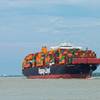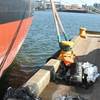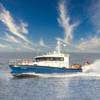Explorer Sets Sail To Prove Point
He made two attempts to cross the Pacific Ocean during the late 1990s, but both ended in disaster. "We have constructed a boat identical to the boats used by ancient navigators, without any modern materials such as plastics," he said. "Everything that you see here is made from a base of knots, using ancient indigenous techniques." The boat was built in the Olympic port of Barcelona from reeds specially imported from Lake Titicaca on the Peru-Bolivia border. The craft, cheered on its way by a flotilla of 30 modern boats, set sail initially for Morocco, from where it will sail across the Atlantic to the Caribbean on a voyage expected to last up to five months. Munoz's Mata Rangi I sank shortly after setting off from Easter Island, while Mata Rangi II sailed 6,250 miles before the crew had to cut the boat in two to get rid of an infestation of sea termites which were eating it.
His exploits follow a long line of expeditions trying to prove the seaworthiness of primitive boats. Among the best known was the 1947 Kon-Tiki Expedition of Norwegian adventurer Thor Heyerdahl, who built a replica balsa raft and sailed 4,300 miles from Peru to Polynesia to demonstrate that aboriginal South Americans could have settled in the Pacific islands. Heyerdahl also led a seven-man crew across the Atlantic, from Morocco to Barbados, on a papyrus reed boat in 1970 on his RA expeditions to prove that ancient Egyptian mariners could have crossed the ocean.
Munoz, an honorary ambassador to UNESCO for his work on the environment and indigenous peoples, admitted there were dangers. "From the moment we are in the sea until we arrive in (Latin) America, the crew and I will be on alert as we could face a life-threatening danger at any moment," he said. But life on board for the crew -- including members from the Easter Islands, Japan, Venezuela, Bolivia and Colombia -- is not expected to be all hardship.
"You have the blue of the sea, the blue of the sky, the color of the reeds, the smell of the reeds, the food, you sleep for 13 hours a day easily - it's a perfect life," Munoz said with a smile. He first found fame in 1981 when he windsurfed 2,000 km from Monte Carlo to Tunisia to demonstrate man's resilience at sea. - (Reuters)













